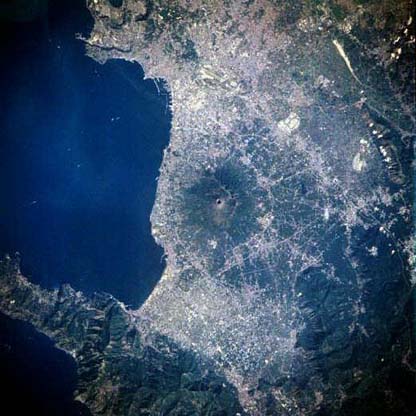 |
 |
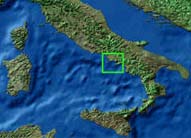 |
|
2007 CupInfo: Potential Location for the Defense

Lisbon/Cascais, Portugal
|
Marseille, France
|
Naples, Italy
Palma de Mallorca, Spain
|
Valencia,
Spain
|
Naples, Italy Several America's Cup sailors have expressed a preference for the selection of Naples to host Alinghi's Defense. Praised for its beauty, history, and dramatic setting, the venue is a favorite among many who have sailed there. Naples is a large city with significant resources to support the needs of both teams and spectators. The Bagnoli redevelopment area would be a natural location to construct a Cup village. Racing would take place in the Gulf of Naples (Golfo di Napoli), 8 to 10 km towing distance from the proposed bases. Naples has strong infrastructure access by air and by rail, in addition to lower costs than most other candidates and solid government financial backing. Further, Prada's achievements in 2000 spurred great enthusiasm for America's Cup among the Italian public. The thought of holding the America's Cup in Naples excites the heart and the mind for many. With its postcard views of classic Italian architecture set against its sweeping bay, Naples could make a memorable regatta host. |
|
|
Strengths: |
||
| Race Course: | convenient, protected, with many vantage points, though potentially light wind at times | |
| Team Infrastructure: | large base area with substantial redevelopment, government support | |
| Support Infrastructure: | large city with many amenities for team families and visitors | |
| Transportation: | solid land and air connections, mostly via Rome | |
|
Costs: |
lower range than some other candidates | |
| General Information: | ||
| Population: | 1,050,000 (Naples) 58,000,000 (Italy) | |
| Official Language: | Italian | |
| Business Competitive Index: | Italy Rank: 24th (about the BCI) | |
| Productivity: | GDP per capita, Italy Rank: 18th | |
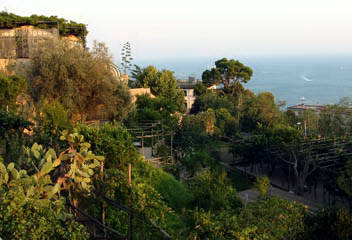 |
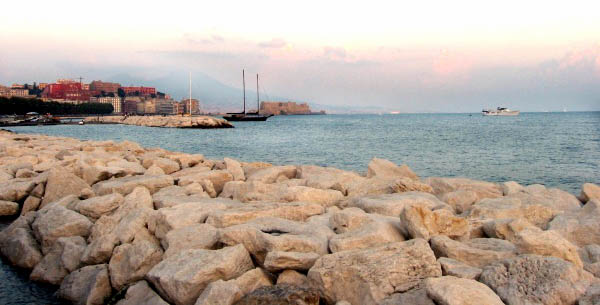 |
|
photos: © Eli-Nati |
|
Travel Information: |
||
| Main Airport: |
Capodichino/Naples International Airport 8 km north of city
center, code: NAP Direct flights from major European cities, airlines and current arrivals |
|
| Rail Service: | Large number of connections via Rome (1h 45m) | |
| Water: | Naples is the central water transport departure point for many resort destinations in the region | |
| Time Zone: | GMT/UTC + 1 | |
| Electricity: |
|
Met data: Tides are small, usually less then 1.5 feet. Summer: light winds 7-16 kts Strong SW winds can create difficult sea conditions, but waves are generally limited under other wind regimes.
|
 |
|
photo: © Eli-Nati |
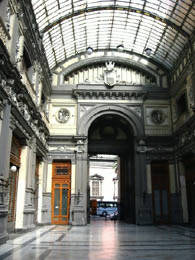 |
Brief History: |
|
|
Founded at least as early as 1000 BC, the fortune of Naples rose and fell under an astonishingly long succession of political rules. An outpost of the Phoenician empire, not to mention a regional center of culture under the Greeks, Naples became a favored retreat for the wealthy and powerful during the Roman era. At various other times allied with the Goths, ruled by the Normans, Angevins, Hapsburgs, and even for a few hundred years existing as an independent republic, Naples also served as capital of the Kingdom of the Two Sicilies. Except for a brief interruption courtesy of Napoleon Bonaparte, the Spanish Bourbons controlled Naples from the 1700's until the Kingdom of Italy gained power in the 1860's under King Victor Emmanuel. Today Naples is the industrial and cultural capital of southern Italy. Nearby Mt. Vesuivius, infamous for destroying Pompeii in 79 A.D., is still an active volcano. Its last major eruption was in 1944. photo: © Eli-Nati |
|
More information: Details of the Naples Venue proposal - magazine article CIA Factbook - Italy
|
Photographs on this page used with the permission of eli-nati.com
|
NM21-771-075 Mt. Vesuvius Area, Italy Spring/Summer 1996 |
||
|
The oval-shaped crater of Mt. Vesuvius (circular feature in the center of the image) is encircled by the urban sprawl of Naples and many smaller urban areas along this section of the southwest coast of Italy. Naples, a major seaport and Italy’s third largest city, is located along the north coast of the Gulf of Naples and is an arm of the Tyrrhenian Sea. Mt. Vesuvius’ summit stands at 4200 feet (1281 meters) above sea level. It is the famous eruption of Vesuvius in 79 A.D. that destroyed the Roman cities of Pompeii and Ercolano. Mt. Vesuvius, now dormant, had its last major eruption in 1944. The steep calderas wall of Somma Volcano, an earlier stratovolcano, is visible several thousand feet north of the Vesuvius’ crater. The darker-looking
landscape shows the area of dense vegetation, while the lighter
terrain is created by assorted human activities either in the
form of cities, an extensive ground transportation network and
agricultural operations. The rugged, mountainous Sorrento
Peninsula (upper left corner) contrasts color wise with the more
densely populated hilly scene that prevails over much of the
terrain surrounding Mt. Vesuvius.
Earth Sciences and Image Analysis, NASA-Johnson Space Center. 2
Sep. 2003. |
||
|
|
*Business Competitive Index is a measure of strength and opportunity in the business environment. The BCI is compiled by the World Economic Forum as part of their Global Competitiveness Survey. A simple explanation would mention that it is related to a country's GDP per capita, but, as might be expected where economists are at work, the analysis is much more complicated than simply that one ratio. See their website for more information. |
|
Inquiries please contact: